A year ago, Chronic Wasting Disease (CWD) showed up in several mule deer and white-tailed deer by Montana’s borders with Wyoming and Canada. Anxiety across the state was palpable. One of those locations was a mere 10 miles from my house; I admit I was seriously worried.
CWD is highly contagious among cervids: deer, elk, moose, reindeer, caribou. There’s no known cure, and it’s always fatal. The Centers for Disease Control (CDC) warns us to avoid exposure to it, as no one knows whether humans can contract it or not. Unfortunately, once CWD comes to an area, it’s impossible to get rid of it.
Montana is one of 26 states to report CWD. The disease was first detected in Colorado in the 1960s. At first it spread via captive cervids, but then it infected wild populations as well. The presence of CWD has spawned a lot of interest among conservationists and hunters, and it’s also generated plenty of misinformation and conspiracy theories. Here’s a primer on the disease and what it means for you.
What is CWD?
Most scientists believe CWD is a transmittable spongiform encephalopathy (TSE), an abnormally folded protein, also called a prion. It’s similar to what causes bovine spongiform encephalopathy (mad cow disease) in cattle and scrapie in sheep. As the disease progresses, CWD prions become more and more concentrated in the brain, spinal column and the rest of the central nervous system but are also present throughout the body of an infected animal.
The sick animal also sheds prions into the environment primarily through its saliva, urine and feces. Those prions exist for years on plants and in the soil, where other animals pick them up. For this reason, CWD spreads quickly among captive deer which are in pens.
In the wild, the disease tends to move more slowly across the landscape because wild deer congregate in smaller numbers and have localized ranges unless food shortages, predator pressure or severe weather forces them to travel.
At first, it’s difficult to find CWD in wild herds even when it’s present.
Once a cervid contracts the disease, it is undetectable to the naked eye for almost two years, until the animal is within only a few months of death.
At that point, the symptoms become obvious, including droopy ears and a malnourished appearance. As abnormal prions increase in the brain and nervous system, the animal functions less normally in every way, including how it eats, causing it to literally waste away.
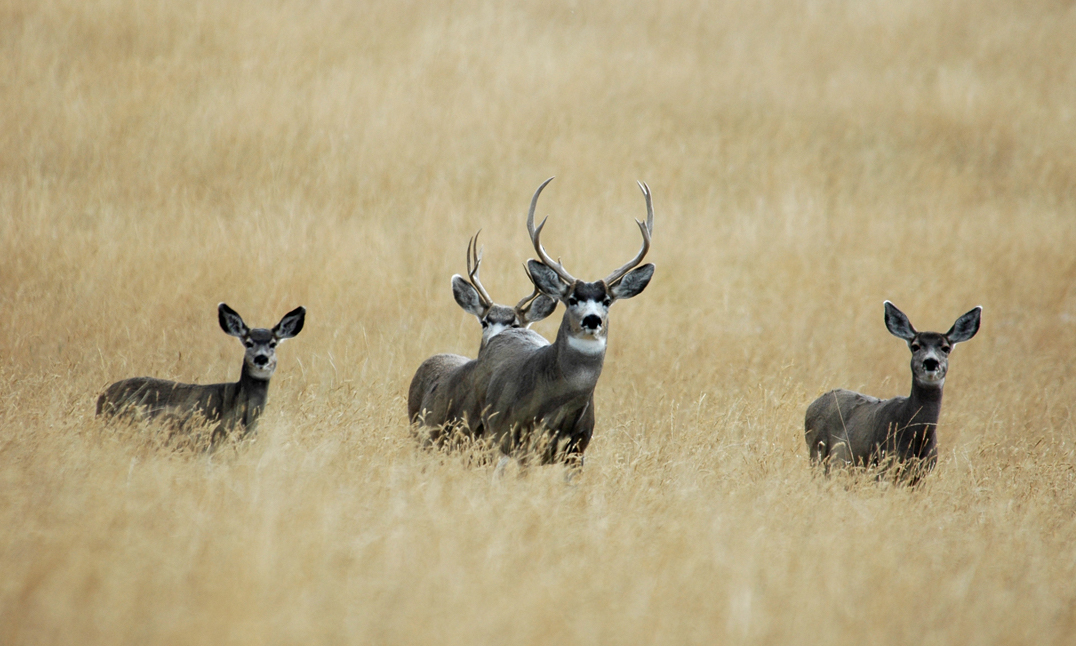
Can CWD be contained?
The short answer is no, but the spread of it can be slowed. For many years, when CWD was discovered in a domestic or wild herd, the accepted protocol was to kill all of the deer in close proximity and then quarantine the area. However, that doesn’t work with wild herds.
“Total eradication is hard to accomplish with wildlife because you might not find all of them, and you can’t determine exactly where all of the prions have been shed,” says Emily Almberg, Disease Ecologist at Montana, Fish, Wildlife & Parks. “A more practical approach is containment.”
Containment starts with determining the geographic area where CWD is present and what percent of the deer population has it. Once that’s known, the rate of spread be slowed mainly by reducing buck to doe ratios (bucks congregate more during the rut and disperse more from their place of birth), discouraging artificial aggregations of deer around agricultural and other human-based food sources, and implementing transportation restrictions of both live cervids and carcasses.
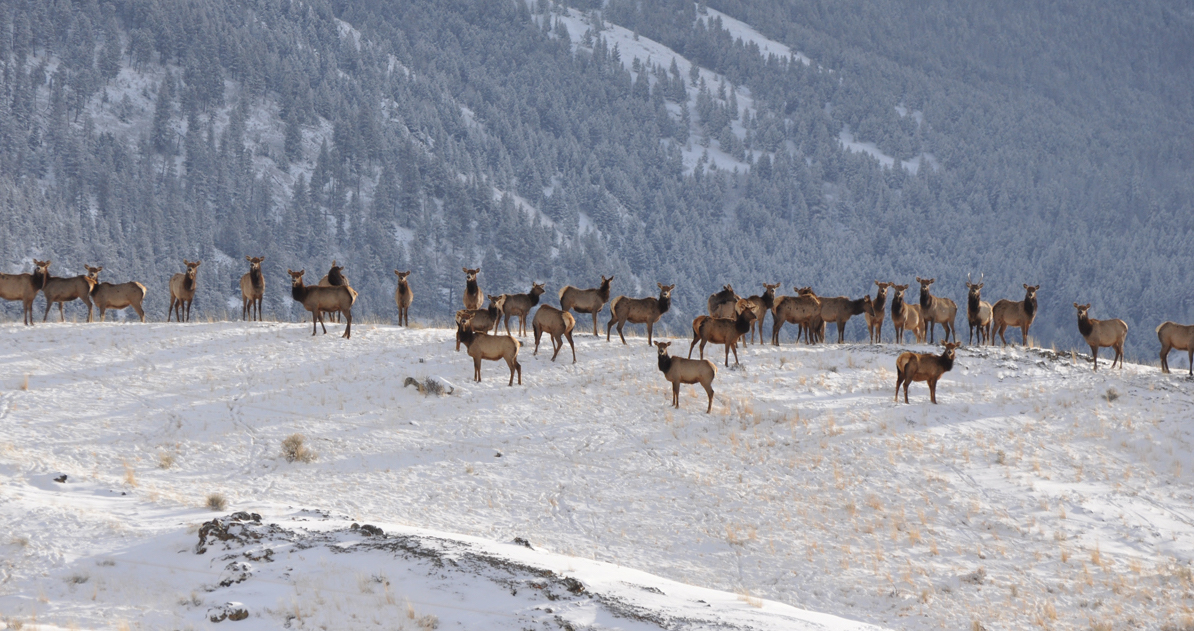
Can deer develop a natural resistance?
Interestingly, about 5 percent of the deer population has shown some resistance to CWD, but it’s not a full resistance. It just takes them five years instead of two to die, which means they are infecting greater numbers of deer.
Bryan Richards, Emerging Disease Coordinator for the USGS National Wildlife Health Center and one of the nation’s leading CWD scientists, isn’t counting on CWD-resistance to save the species. He advocates for deer herds that are at an appropriate size for their habitat as a way to control the spread of CWD and warns the public to be careful about their information sources about the disease.
“Detractors, who do not think CWD is a concern, point out that less than one percent of the deer and elk population in the U.S. have CWD, but that’s not a relevant statistic,” says Richards, “In Iowa County, Wisconsin, adult male deer in a 12 by 12-mile area have a CWD prevalence of 50 percent. Now that’s meaningful!”
Richards emphasizes that the total number of deer in a particular habitat is also an important consideration. For example, if there are 100 deer in an area and 50 percent of them have CWD, that’s 50 cases of the disease. However, if there are 1,000 deer in that same area and 50 percent of them have CWD, that’s 500 cases and each of those animals is shedding prions onto the landscape.
“We’re challenged with CWD,” confides Richards, “We can manage habitat or numbers through harvest. We’re a long way from a viable vaccine, and we don’t have the tools to mitigate the prions in the environment.”
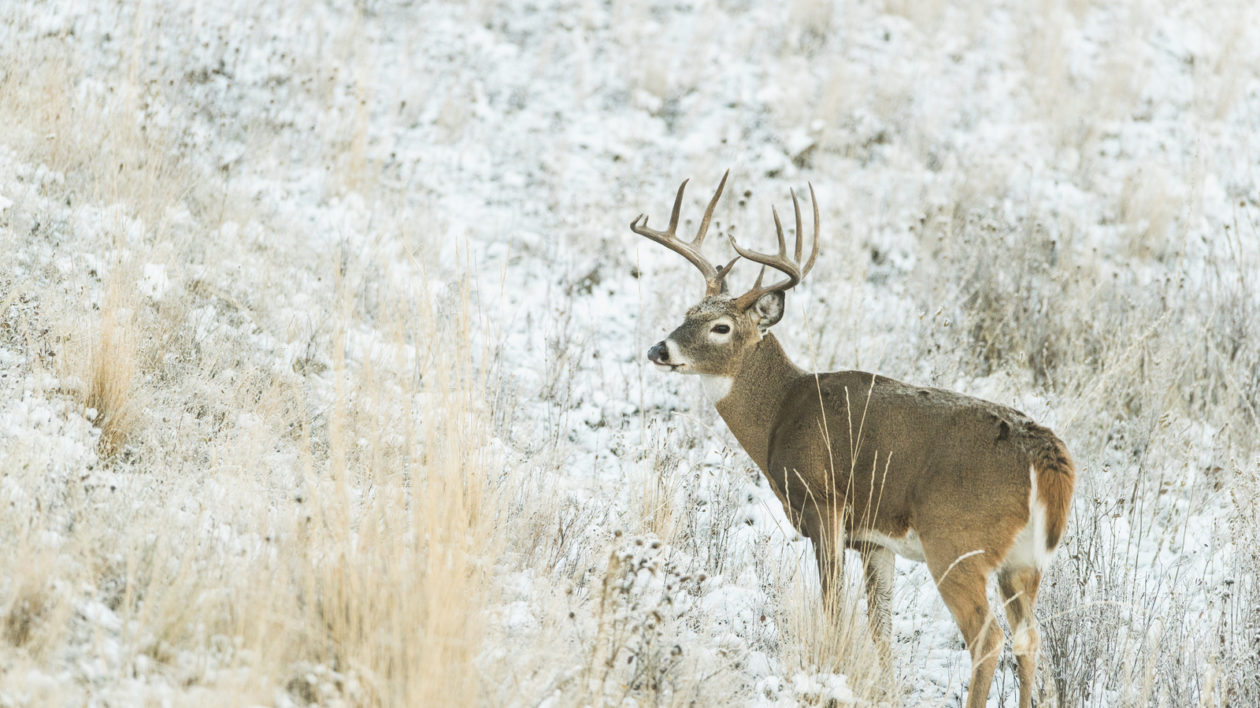
Should you eat venison infected with CWD?
The CDC and the World Health Organization both say “no”, yet there are no known cases so far in humans. However, a similar prion disease, mad cow disease, has jumped the species barrier in the form of Creutzfeldt-Jakob’s Disease, raising concerns that CWD could, too.
In a long-term study in Canada, scientists exposed macaques (monkeys) to CWD by feeding them infected venison. Two of the macaques did develop a prion disease. However, those scientists have yet to publish a peer-reviewed paper on their findings, and no one has been able to duplicate their results.
Brent Race, staff scientist at the Laboratory of Persistent Viral Diseases at the National Institute of Allergy and Infectious Diseases (NIAID), is among those who have tried. “We injected macaques with extremely high levels of CWD-infected deer and elk brains without any evidence of CWD,” says Race, who cautions that it only takes one mismatch in an amino acid sequence to create a species barrier. Macaques have nine substitutions compared to humans, so they’re not a perfect simulation.
Three days before writing this, Race forwarded the findings of his latest experiment just published in the January 2019 issue of Veterinary Research. Race and his colleagues injected large amounts of CWD prions into 108 transgenic mice, which were genetically altered to match humans. In this case, no mice contracted CWD outright, but four of them had low levels of the agent causing CWD. Were the mice infected with CWD, or were they false positives due to residual from the inoculations that their systems hadn’t dispelled yet? Race doesn’t know.
“The model itself is really aggressive,” wrote Race to me in an email after we spoke on the phone. “Intracerebral inoculation is about as direct as you can get, and the levels of prion protein [we injected] in the mice were much higher than ‘normal’ levels… Negative results from this study therefore suggest a strong [species] barrier. Positive transmission should be interpreted with caution, and we believe there may be other explanations. We are currently doing more follow up experiments to become more confident on how to interpret the four indeterminate mice.”
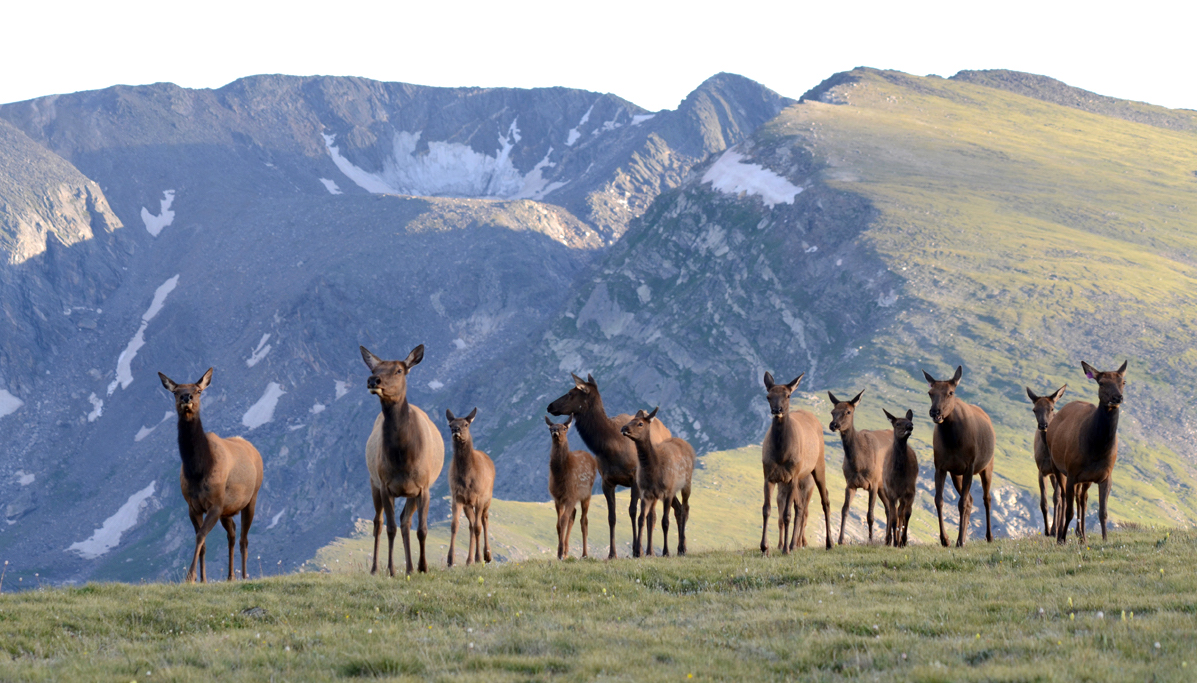
Prion versus bacteria?
Then there’s Frank Bastion’s theory that CWD is not caused by prions, but by a bacterium. Bastion, a medical doctor and biologist at Louisiana State University who specializes in TSE diseases, claims CWD is caused by a very small Spiroplasma bacterium that doesn’t have a cell wall. He believes the misfolded proteins are the result of CWD, not the cause of it. He says the lack of cell wall is the reason antibiotics, which target cell walls, don’t work.
In 2007, Bastion isolated Spiroplasma from scrapie and CWD, cultured them and then injected them into healthy sheep and deer. Bastian claims the sheep and deer developed scrapie and CWD, respectively. However, like the macaque experiment in Canada, other researchers have not been able to duplicate Bastion’s results.
“We can get robust prion infection without Spiroplasma,” says Race, who doesn’t completely discount Bastion’s theory, but he’s not hanging his professional career on it either without conclusive evidence from other sources.
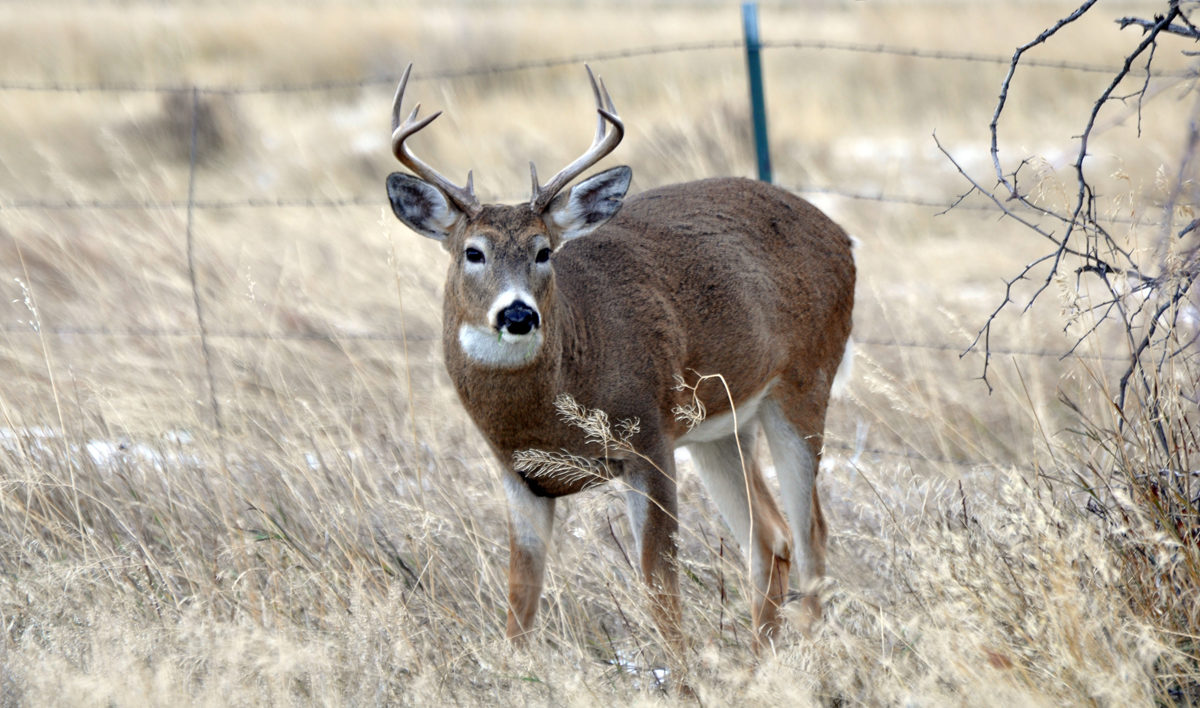
Will CWD wipe out deer and elk?
No one can project the long-term impact of the disease. Conservation agencies are in it for the long haul even though funding for surveillance and research has dwindled. Another challenge is keeping the general public engaged over time. CWD is hard for people to grasp. It’s been in the United States for five decades, and we’ve still got lots of wild deer and elk, in some places too many, so it’s easy to turn a blind eye. What’s more, people haven’t contracted it. However, in states like Colorado, where CWD has existed for several decades and where prevalences are 40% or higher, cervid populations have declined precipitously.
“CWD will continue to affect a treasured natural resource and might become a human health issue,” says Richards, “We’re not sure we can get ahead of it, but there’s also vast areas of the U.S. where no evidence of CWD exists. It’s up to us to do all we can to keep it that way.”
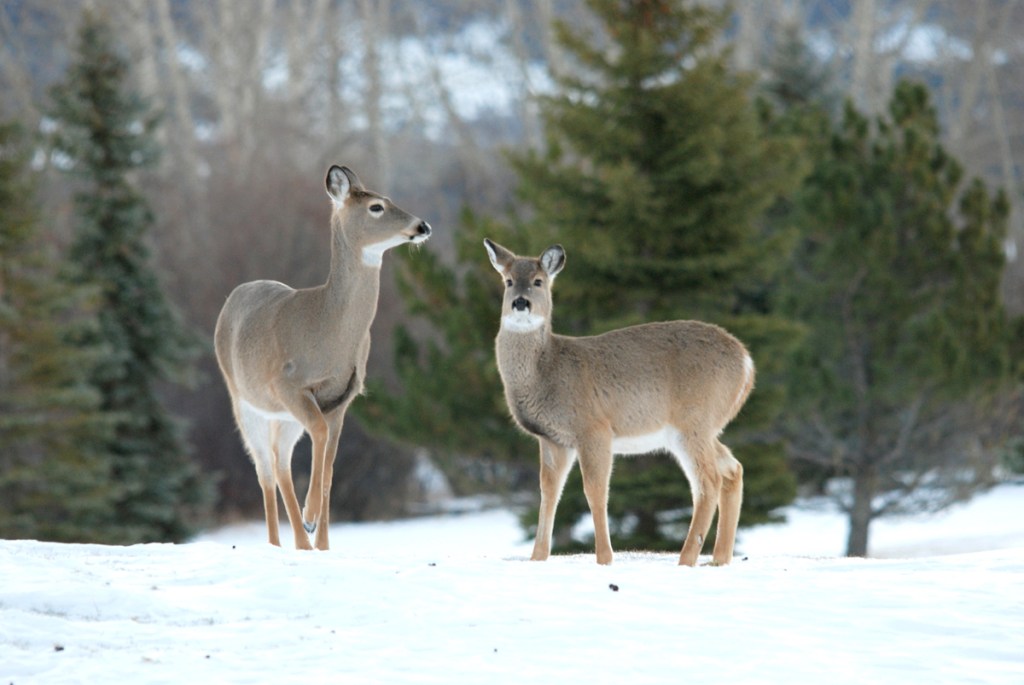



Is there any way to know that a harvested deer has cwd?
I live in the Midwest portion of the USA. (Minnesota / Wisconsin border) I regularly feed deer whole corn in my back yard purchased in packages from local retailers. Is this something that I should not be doing and could this cause any spreading of the disease? Thank You
It is about the black tailed deer in my area, but not CWD… The 9 yrs. I’ve lived here there have always been deer. Females give birth here, they come back, it is their land. Last year was a ‘massacre’ of the deer – nighttime road kill. I couldn’t drive out without seeing a beautiful dead deer on the road (most on one particular stretch of road). Over the holidays, dead babies & one dead female in front of my place. Almost all of the female deer & their babes died who had been on my place. Deeply sickening. I don’t believe it is an accident. I believe the new marijuana growers are the murderers. I’ve spoke with the sheriff office, the state police, fish & wildlife. No one seems to care. Where to go with this? I’m in Oregon. Sadly, the state police say it is happening all over the state.
If a land owner plants a food plot that most of the local deer come to each day, and also has a protine feeder with mineral block in a close proximenity which one is more likely to aid the spread of CWD ?Are there any medications that land owners can put out to help prevent the spread of CWD ?
terrible news out of Colorado on cwd…
TUESDAY, MARCH 12, 2019
Colorado Parks and Wildlife is addressing Chronic Wasting Disease with its CWD Response Plan
https://chronic-wasting-disease.blogspot.com/2019/03/colorado-parks-and-wildlife-is.html
Frank O. Bastian : Is a TSE expert. His research is heading in a new direction. Help him find how CWD is really being transmitted. Plants , soil, water, feeding. Anyone else find this a little hard to believe? Surly we would all be dead by now if this was how CWD is spread.
I wonder if some of this is due to the elimination of the natural predators of deer and elk. Wolves and cougars would take the sick and weak, but hunters usually want the animals with the best rack. Just curious.
There has been discussion that Alzheimer’s Disease may be the result of folded prions. Is there any possibility of CWD being connected to AD? We live where deer pass through regularly, though there have been no reports of CWD.
All states could require hunters to make available medical samples of the deer harvested to be tested for CED which would find hot spots If they exist. Is it possible that agricultural chemicals could be causing CWD as it is mentioned that fed animals appear to be at ground zero so to speak? DDT for example was a good thing until it wasn’t. Eagle egg shells became extremely fragile due to DDT. Just look at lead being a toxic metal to brain cells and for many years it was dumped into the air from leaded gasoline and placed into paint until paint companies were prohibited from adding this metal which is a reproductive toxin.
This is the second article you sent me regarding CWD. The first article I received from The Nature Conservancy on this was maybe 4 or 6 weeks ago, maybe 2 months ago at the most.
I think there is new information contained in this article compared to the last article.
It is unfortunate to have it and have it named. Once it has a name then, in my mind there are more cases known to exist. I hope The Nature Conservancy can find a solution or a cure for it before it escalates any further.
Thank you for all you do and thank you for your time.
Who are we trying to fool here??? We know that mad caw disease was caused from feeding cows cow meet in there food. So are deer eating each other now? Or is man experimenting with the deer population now. Probably to find out if they can eventually feed humans human meet. Don’t trust everything you see on the internet. You will never get the full story in these experiments.
What are the 26 states affected by CWD .
Maybe this is nature’s way of keeping the deer/moose/elk population in check.? I know that for many years, the state of Virginia has always said that the deer population there is larger than the people who live there. However, I see and am greatly concerned of CWD spreading, with no specific way to tell what other animals are non-immune, and not any cure discovered.
Is it possible that infected female deer who give birth give some immunity to the newborn as well as CWD? Then, as these female turn two and give birth, is there a possibility a little more immunity is given to the newborn along with the CWD? As you have reported, some deer have lived 5 years with the disease. Could this be the start of their builtin survival DNA? Does this mean over time, the surviving herds could possibly build up there own immunity to this?
We lived in Colorado for 27 years and saw first hand the effects of CWD so we understand the terrible loss of these beautiful animals who die quite painfully. Is it nature at work? Or, is this something regarding research gone bad? Where did it come from? Is nature thinning the herd? Thank you for reading this. Rose
I’ve wondered if healthier populations of predators would benefit efforts to control/contain CWD? I’d think an infected deer would run an increasingly higher risk of being culled as the disease progresses.
Yes and no. Predators are likely to cull infected animals. However this is a very long disease and misfolded prions are being shed into the environment or are infectious long before they are showing clinical signs. Also prions will remain infectious after being passed through the digestive tract of predators, so in away predators may be actually spreading the disease.